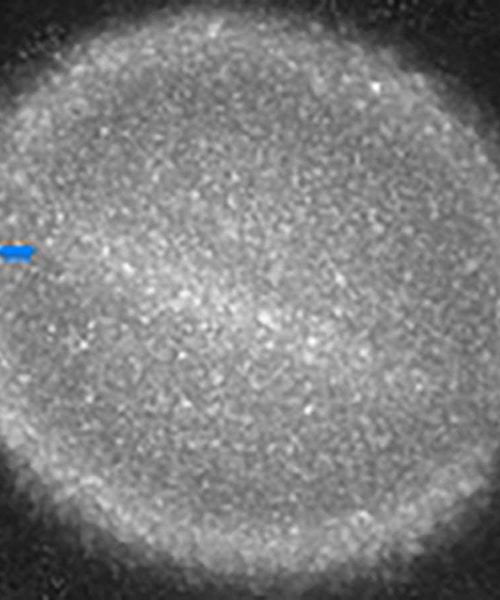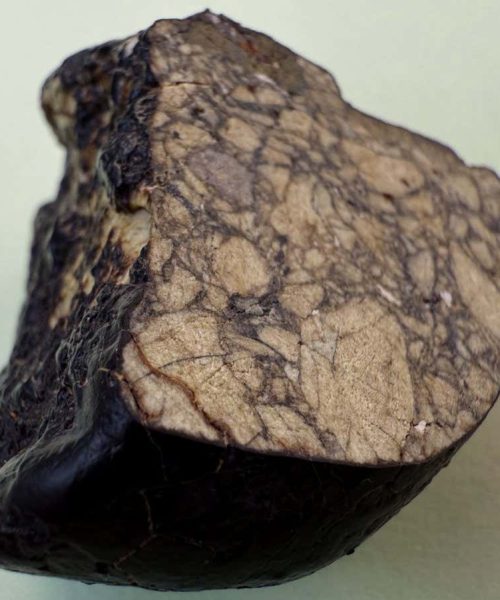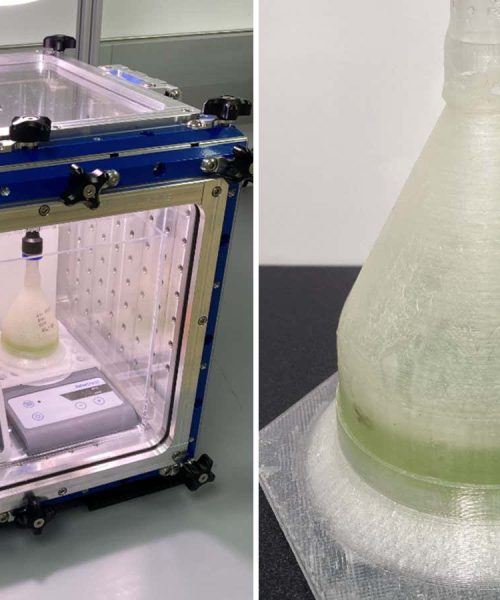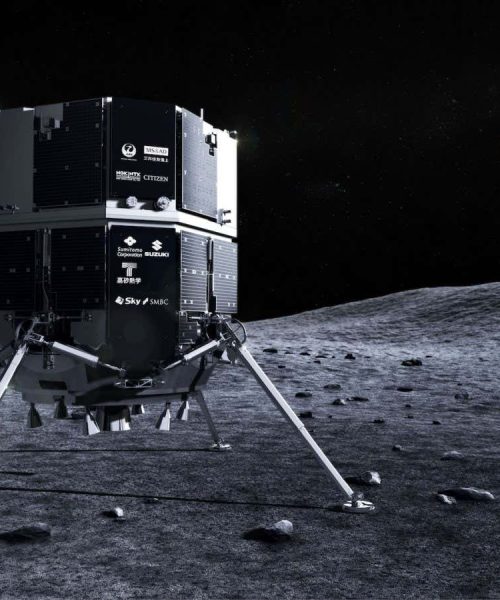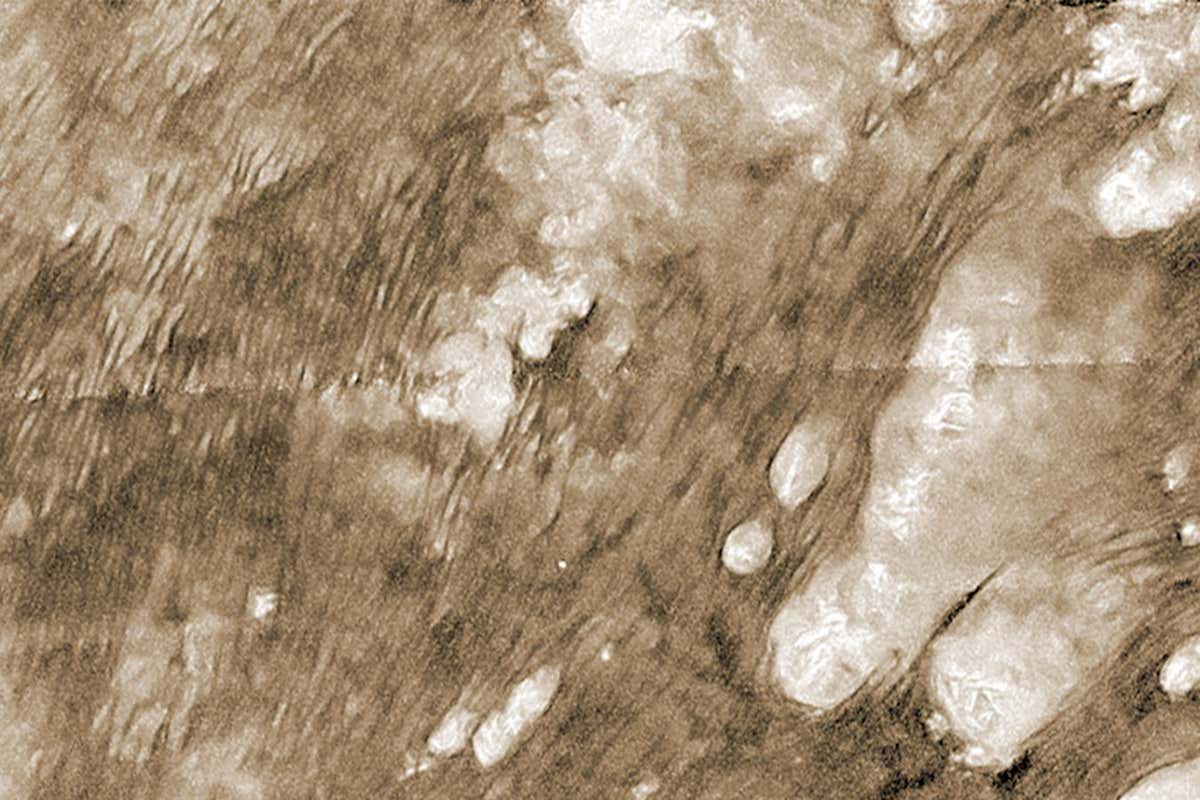
A radar image of the Shangri-La sand sea on Titan, taken from NASA’s Cassini spacecraft
NASA/JPL-Caltech/ASI/Université Paris-Diderot
The dunes on Saturn’s moon Titan may be made up of the remains of smaller moons that once smashed together and ground each other into sand.
Titan has sand dunes covering about 17 per cent of its surface, sweeping across its equatorial regions. Many researchers have suggested the sand may be made of organic particles that form in Titan’s thick atmosphere and then drift down to the ground. However, laboratory experiments have shown these types of particles tend to be very fragile, so they may not be able to stay intact while drifting across the moon’s surface to form dunes.
Advertisement
Bill Bottke at the Southwest Research Institute in Colorado and his colleagues have come up with an alternate explanation that may be a better fit for the observations we have of Titan’s dunes: the sand particles may come from far beyond Titan’s atmosphere. He presented this work at the Lunar and Planetary Science Conference in Texas on 12 March.
Each of the giant planets in our solar system has a set of irregular satellites – relatively small moons that were once asteroids or comets before they were captured into orbit around a planet. These moons are made of particles that tend to be about the same size as Titan’s dune particles and are much stronger than the atmospheric organics.
Early in the solar system, these moons would have smashed together often, wearing each other down and releasing huge amounts of dust and grit. “Irregular satellites collisionally grind really effectively,” said Bottke. But would this period of grinding produce enough ground-up remains to populate Titan’s dunes? According to the researchers’ simulations, Bottke said, “Titan gets on the order of about 106 kilometres cubed of material, and that’s several times more than the dunes.” Even more material could be added by direct impacts of meteorites and comets on Titan.
“This model might be crazy, but it is testable,” said Bottke. If this is how Titan’s dune particles formed, bits of material might be left in the atmosphere, and those could have visibly different properties to organic particles that formed there.
“It might even be possible to test it with the data we have from the Cassini-Huygens mission,” says Michael Malaska at NASA’s Jet Propulsion Laboratory in California. And even if that data is inconclusive, NASA’s Dragonfly mission is slated to launch towards Titan in 2028. It is planned to fly through the dunes and measure the sand particles, which should solve this mystery once and for all.
Topics:
